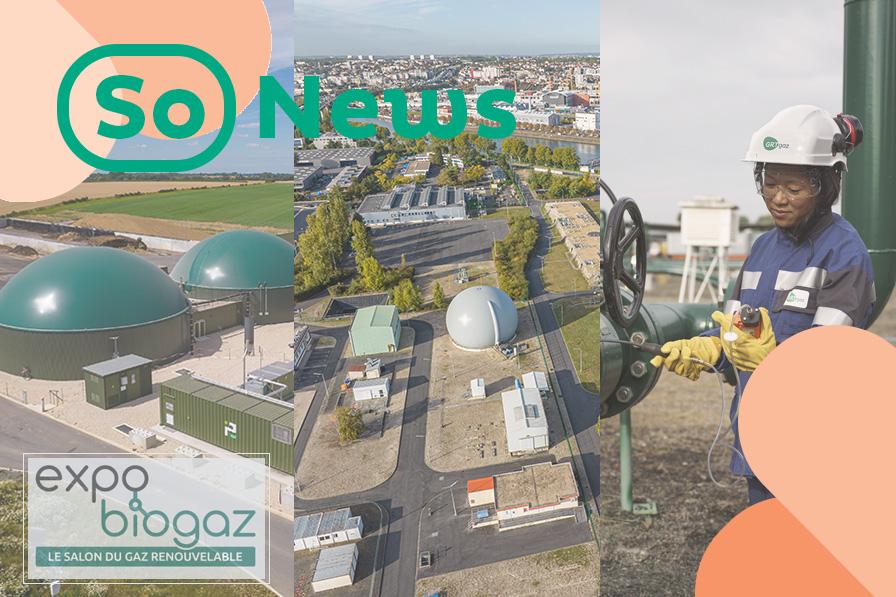soNews no. 13 just published (May 2024)

Designed for all our stakeholders, the soNews newsletter shines the spotlight on the latest news about the energy transition and GRTgaz's actions in this area.
Subscribe to the soTerritoires and soNews newsletters

soNews 13 contents
History may record that one of the first building blocks of the European domestic hydrogen market was laid by GRTgaz and its partner, German transmission operator Creos Deutschland. In April, the signing of the investment decision for the MosaHYc project, straddling the Grand Est region and Saarland in Germany, paved the way for the construction of the first Franco-German cross-border hydrogen pipeline network. The investment reflects project’s scale of ambition: 110 million, of which €40 million for GRTgaz in the Grand Est region. From 2027, this cross-border network of 90 km of pipelines will interconnect producers of renewable, low-carbon hydrogen with consumers, including the German steelworks of the SHS group, ROGESA Roheisengesellschaft Saar mbH1. The latter, which intends to decarbonise its steel production using hydrogen, will be the first major industrial customer to say yes to mosaHYc. But certainly not the last! The grid is up and running and will be able to connect new producers and consumers at a later date. “Together, we are ushering in a new era for the Greater Region: steel production is becoming climate-neutral and gas networks are being transformed to transport hydrogen”, said an enthusiastic Sandrine Meunier, Managing Director of GRTgaz, and the Directors of the SHS Group and Creos Deutschland. The Europe of hydrogen is coming into being.
Good news for H2med: the renewable hydrogen corridor linking the Iberian Peninsula (Spain and Portugal), France and Germany is on the way. Its Franco-Spanish BarMar and Spanish-Portuguese CelZa sections have been included once and for all on the European Union's list of Projects of Common Interest (PCIs) In practical terms, this means that BarMar will be able to enjoy the benefits of PIC status, such as faster procedures and eligibility for financial aid. Short for "Barcelona-Marseille", BarMar is an undersea renewable hydrogen pipeline project being developed by a consortium comprising GRTgaz, Enagás (Spain) and Teréga (France/South-West). Its commissioning as part of the H2med consortium is planned for 2030.
At the end of the gas winter, gas stocks are traditionally lower. But do you know what their fill rate was at the time? Around 39%, well above the peak of the last seven years, as revealed by the Summer Outlook,the traditional springtime assessment of the situation, drawn up to prepare for the following winter. The objective of a 90% fill rate by 1 November, as required by European regulations to ensure security of supply by winter, can be achieved in all the scenarios studied. This is reassuring, even if the stoppage of Russian gas pipeline supply still reduces the scope for action. As in 2023, “sustained” use will have to be made of gas imports from the North Sea (from Dunkirk), the Franco-Spanish Pirineos interconnection point, and via LNG terminals, “all throughout the season”. All the while keeping up the energy austerity efforts that have proven so effective since 2022. We know the way.
A breeze of optimism has blown in. The 9th edition of the Renewable Gas Panorama shows a return to positive momentum, after the recent economic upheavals. In 2023, the methanisation sector grew (9.1 TWh of biomethane injected, +31%). The current target is for renewable gases to cover 20% of French gas consumption by 2030. The expected boom in new production methods, such as pyrogazification and hydrothermal gasification, should help. To make this a reality, however, the industry is now looking to the public authorities for forthright support, in particular the launch of a call for projects to get the pyrogasification industry off the ground. At the same time, calls for projects for biomethane fuel (BioGNV) need to be implemented quickly.
- As at end-2023, 652 facilities were injecting biomethane into France's gas transmission and distribution networks, an increase of 27% over one year. Their total production capacity is 11.8 TWh/year, the equivalent of two nuclear reactors!
- 30%
Share of bioNGV in all NGV (Natural Gas Vehicle) consumed in France in 2023. A record. Read all the figures on the CNG (Bio)Observatory..
In 2023, we poured our energies into creating a more sustainable future, and don’t intend to stop any time soon! Behind its somewhat stern name, GRTgaz's integrated report is a condensate of this transformation. Investing in new networks that use renewable gases and low-carbon hydrogen, stimulating austerity, supporting our customers as they move towards decarbonisation and reducing our impact... These inspiring challenges are not just words: the actions are concrete.
Expobiogaz, the annual event for the biogas industry, will be held on 5 and 6 June in Strasbourg. This year, with the support of GRTgaz, the focus will be on pyrogasification and hydrothermal gasification (innovative technologies for producing gas from solid, wet or liquid waste). Come and see us at Stand 1B20!